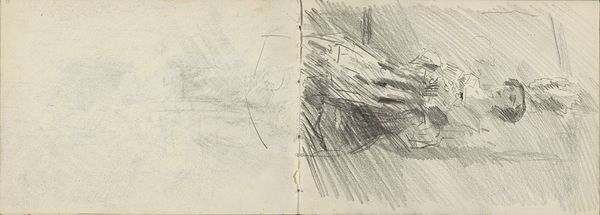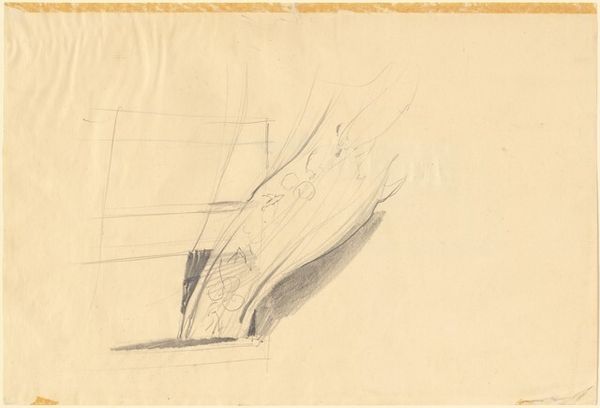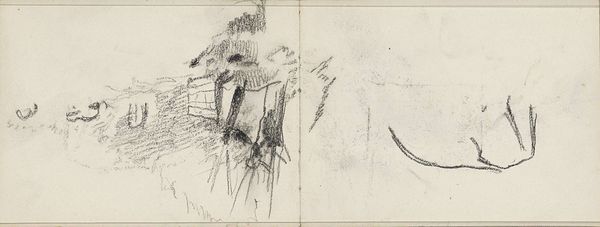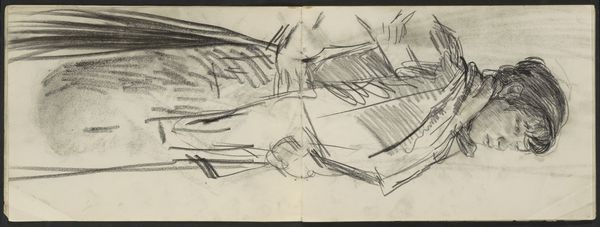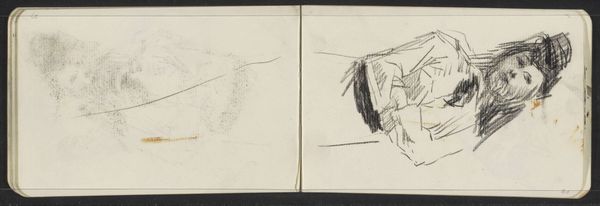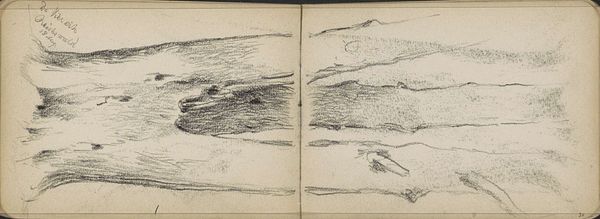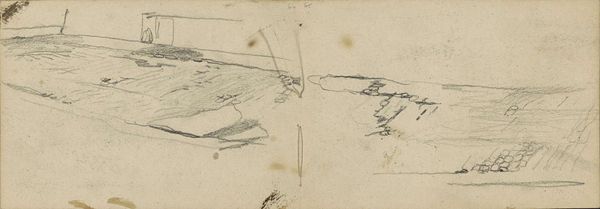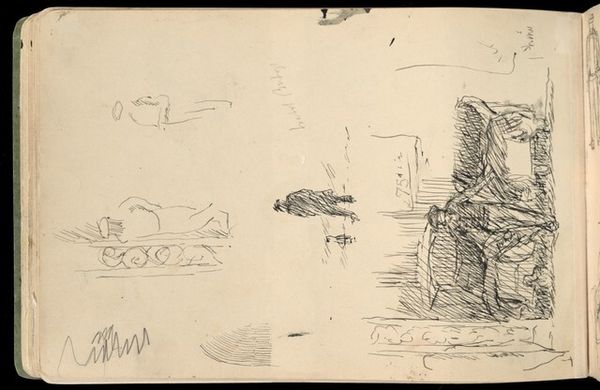
drawing, paper, pencil
#
drawing
#
impressionism
#
landscape
#
paper
#
pencil
#
watercolor
Dimensions: height 158 mm, width 247 mm
Copyright: Rijks Museum: Open Domain
Curator: Looking at this sketchbook page, it's a bit like rifling through someone's visual thoughts, isn't it? Editor: Indeed. There’s a certain immediacy here, an unedited quality that really speaks. Curator: We're looking at "Studieblad met zeilschepen en een hek bij een weiland," a drawing done around 1876-1877 by Willem Cornelis Rip. It's primarily pencil on paper, but you can also see hints of watercolor. What's your first impression? Editor: Stark and serene, actually. Even in these unfinished sketches, there's a strong sense of place. I'm struck by how Rip captures the quiet, rural feel of the landscape while hinting at the larger forces—the sea and trade—that shaped the Dutch economy during this period. Curator: Absolutely. It's impressionistic, catching fleeting moments and sensations. But I feel a real tension too—the raw energy of the pencil marks juxtaposed with the tranquility of the scenes. He clearly wanted to show this moment. Look at the fence in the foreground and the distant boats. It really emphasizes the idea of boundaries and horizons. Editor: And who, historically, were these boundaries intended for, and for whose benefit? The Dutch Golden Age built itself through its domination of oceanic trade, achieved through systemic forms of subjugation. In light of that legacy, the ‘quiet, rural feel’ you describe feels very loaded. Curator: I get that completely! Seeing art as entangled with historical context changes the way we understand it. What do you think about the ships in the distance on the right panel, with their faint masts almost disappearing into the aged, discolored areas of the paper? There’s something ghostlike, melancholic about them. Editor: It's haunting. It forces us to confront the unseen histories carried across those waters – the violent displacements and exploitation. It reframes the picturesque landscape not just as a site of peaceful scenery, but of power, exclusion, and the legacies of colonial capitalism. Curator: A potent reminder that even sketches like these can be anything but simple, and are worthy of conversation. I keep getting pulled back to that initial tranquility… I love the way he managed to put so much of life in one single drawing. Editor: Well, as we've shown, these deceptively 'simple' compositions prompt us to contemplate the visible, and perhaps more importantly, the less visible dynamics that frame our world. A world inherited from previous generations.
Comments
No comments
Be the first to comment and join the conversation on the ultimate creative platform.
